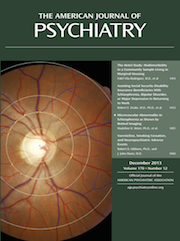SAD and the Not-So-Single Photoreceptors
Abstract
Research in the last century has demonstrated that light is a critical regulator of physiology in animals. More recent research has exposed the influence of light on human behavior, including the phenomenon of seasonal affective disorder (SAD). Repeated studies have shown that light treatment is effective in this disorder. The molecular mechanism by which the body absorbs the light that has energizing and antidepressant effects is still uncertain. This review presents evidence regarding the role of rod and cone photoreceptors, as well as the role of recently discovered nonvisual neuronal melanopsin-containing photoreceptors. The authors discuss an evolutionary-based theoretical model of humoral phototransduction. This model postulates that tetrapyrrole pigments, including hemoglobin and bilirubin, are blood-borne photoreceptors, regulating gasotransmitters such as carbon monoxide when exposed to light in the eye. Recent studies in an animal model for seasonality provide data consistent with this model. Understanding the molecular mechanisms by which light affects physiology may guide the development of therapies for SAD and other pathologies of circadian and circannual regulation.



